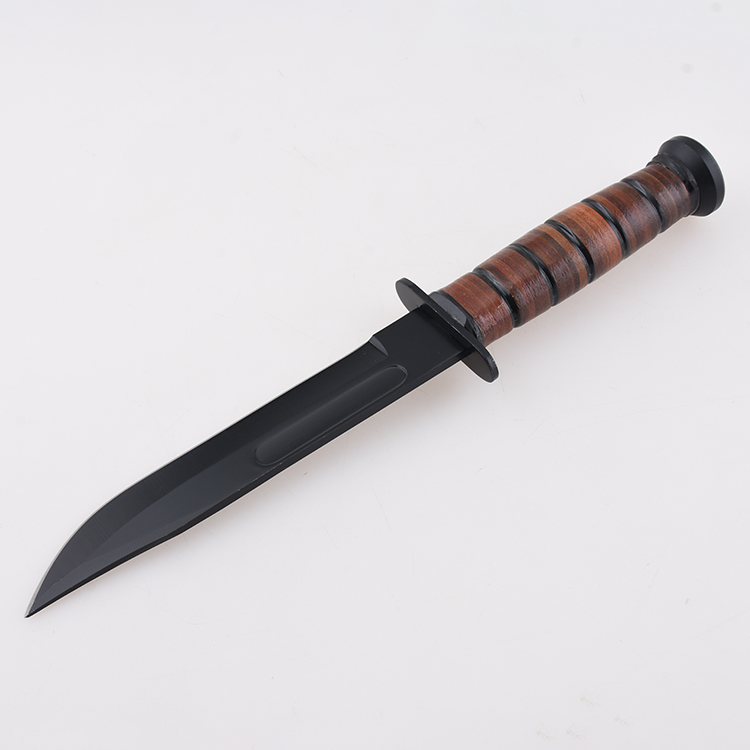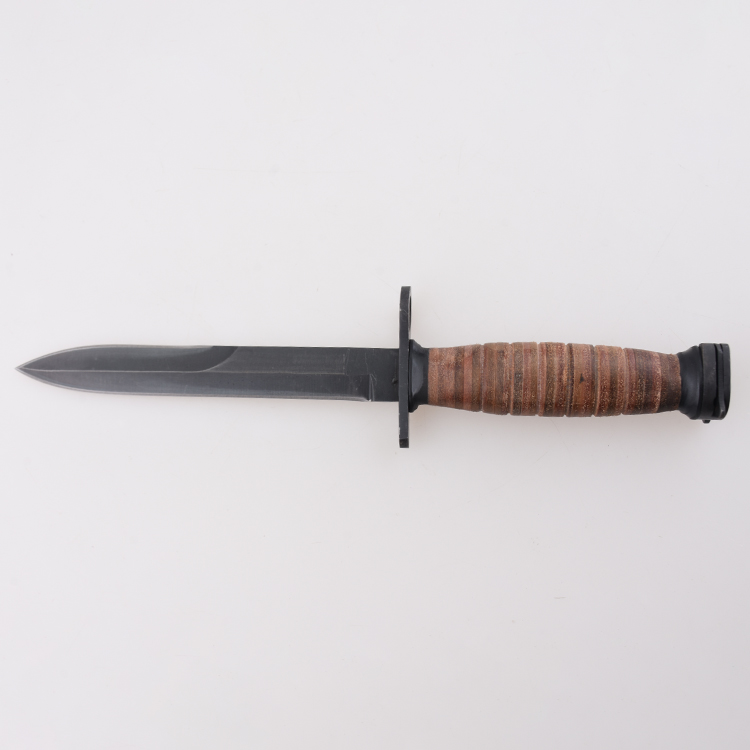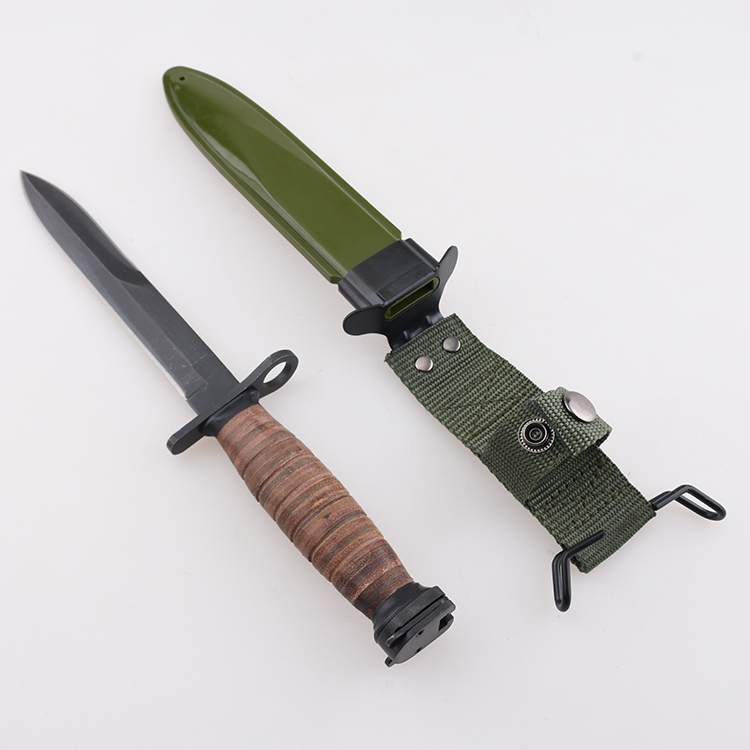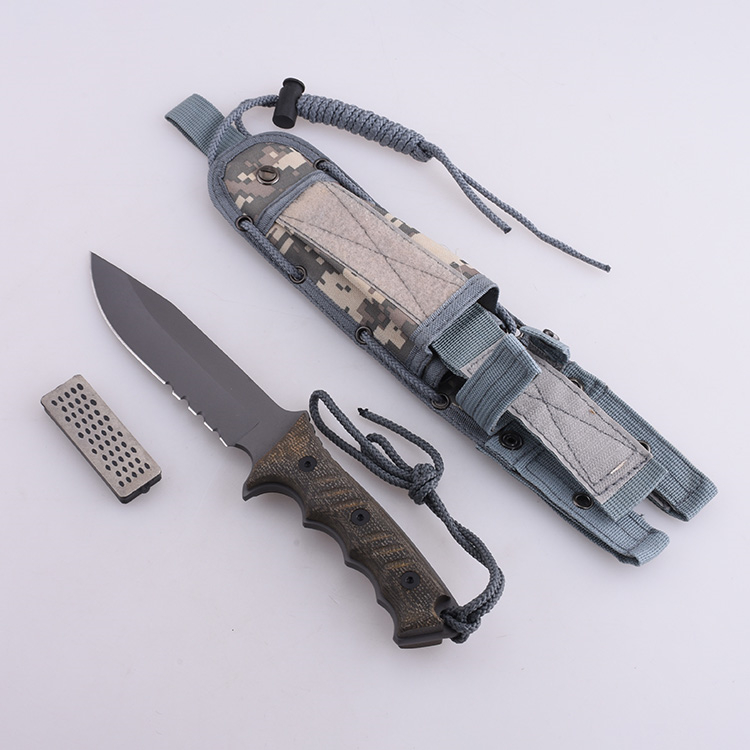Every knife has a story, and the Couteau Bowie is no exception. The origins of the Bowie knife are purely American, and it all comes down to a brutal Sandbar Fight in September 1827. Newspapers all over America contributed to the legendary knife that Bowie used in the fight. The knife became famous all over America, and everyone wanted their blacksmiths to forge them the cultural icon.
The hype caught on, and the Bowie knife found its place in Hollywood. The knife’s historical significance and tough, utilitarian, and personal defense characteristics make it worth studying. This article will investigate the knife’s origins, evolution, military history, and modern-day revival. Want to understand the knife’s enduring popularity? Keep reading to explore its design, functionality, and modern-day revival!
The Origins of the Bowie Knife
The 1827 Vidalia Sandbar Fight was a regular duel between wealthy families like Cunys and new families. Multiple reasons for the duel revolved around election rigging, debts, romantic entanglement, and business. However, the duel that ended with a handshake turned violent. The spectators got involved, resulting in a bloody brawl for James Bowie.
In the fight, James Bowie was the primary target of aggression. James Bowie was considered a Demigod primarily due to his ability to recover from injuries that appeared humanly impossible. Bowie dispatched his foe Norris Wright with the now-famous Bowie Knife while being stabbed, cut, and shot. Despite all odds, he survived!
The reality-defying odds wrapped the Bowie Knife with mythical properties, compelling members of the public to own one themselves. The ages-long passing on of tall tales and storytelling resulted in everyone wanting the Bowie knife hanging on their belt.
The Bowie Knife in the 19th Century
The regulation of Bowie knives, a symbol of personal protection and rugged individualism, underscores the cultural and legal debates that shaped 19th-century America. The Bowie knife, popularized by its use in the Mexican-American War and by Texas Rangers, holds a significant place in American frontier history. Its story is not just about a weapon but about the spirit of a nation, making it a topic of profound cultural and historical interest.
The Bowie knife was regulated similarly to other knives well-suited for fighting, such as dirks and daggers. Between 1837 and 1899, several states passed laws regulating or prohibiting the carrying of Bowie knives, reflecting concerns over their use in duels and other confrontations. Around 98% of statutes on “Bowie knives” treated them the same as other blade arms. Bowie knives and handguns were often regulated similarly, as they were both concealable, effective for defense, and easy to misuse for offense. While some states prohibited sales, the majority respected the right to keep and bear arms, including Bowie knives, allowing open carry while forbidding concealed carry.
The Evolution of Bowie Knife Design
The original shape and design of the Bowie knife are unknown. Everyone wanted to own one, so the blacksmiths forged blades based on their experience and the 2nd hand accounts they heard. However, with time, the design of the modern Bowie Knife solidified into a coffin-shaped handle, heavy cross guard, and sweeping clip-point blade with its partially sharpened top “false” edge.
Influences of the Bowie Knife Design
The initial design indicated that immigrants’ first or second wave brought their design knowledge to craft weapons. Looking at Sacks, Bullock, and Spanish Bull Knife knife suggests the inspiration for the Bowie Knife design.
The historians suggest that the first-hand accounts they can trace back to the lower Mississippi River fight was that it was a large butcher knife. If there is one Bladesmith that potentially links with the early Bowie Knife design, it is James Black.
Craftsmanship of James Black
He was known to have perfected the art of ancient knife craft and discovered the Damascus secret, an ancient technique of treating tempering and hardening steel. Unfortunately, James Black went blind and broke, so he could not pass his capabilities to upcoming generations.
Modern-Day Bowie Knife Design
Considering the knife’s historical nature, let’s look at its modern-day design: a bowie knife with a cross guard, clip point, and false edge. There were four original designs of the Bowie knife, and it is hard to determine which one came first.
● Material
The earliest materials of Bowie Knife were limited to Carbon steel. It was the only high-quality steel that the Blacksmith of the 19th century had access to. Blacksmiths made the handles with natural wood, bone, and leather.
● Cross Guard
The portion that protects the fingers dates back to swords and daggers. Immigrants from all over the world brought ideas to manufacture and improve the design of the initial Bowie knife, which did not feature a cross guard.
● Clip Point
Archeologists have unearthed knives from the Macedonian period (around 808 BC to 168 BC) that featured a clip point. The clip point design’s practical nature helped with penetration, finesse, and skinning.
● Sharp and Flase Edge
The sharp and flat edge is just an evolutionary phenomenon from swords. Its design gives the bowie knife a strengthened tip.
The Bowie Knife’s Place in Military History
Technological advancements are often the result of military requirements. Bowie knife has its place in military history:
Military Applications of the Bowie Knife Throughout History
The military applications of the Bowie knife were diverse and extensive. The 19th century American West utilized Bowie Knife for military and frontier purposes. The design of the Bowie knife was practical for fighting, clearing brush, and skinning. During the Texas Revolution and the Mexican-American War, Texas Rangers and other frontier fighters utilized the Bowie knife. Its versatility and its mystical properties made it a valuable asset for soldiers.
In the American Civil War, the Bowie knife continued as a utility knife and a personal defense weapon. Some Confederate forces, such as the 48th Alabama Militia, were even issued Bowie knives and “Bowie-knife-shaped pikes” by the state government for use in combat.
Beyond the American frontier, the Bowie knife design significantly influenced the development of similar military knives worldwide. For instance, the British “Socket Bayonet” and the French “Briquet” knives were renditions of Bowie’s emphasis on a large, sturdy blade suitable for utility and close-quarters fighting. The final product demonstrates the global reach and influence of the Bowie knife’s design.
Role of the Bowie Knife in Specific Historical Events
After the Sandbar Fight in 1827 and during the Texas Revolution, Bowie knives were carried by many Texian fighters, including Jim Bowie himself, at the Battle of the Alamo in 1836. The Confederate government decided to arm the 48th Alabama Militia with Bowie knives during the Civil War. The action highlighted the Bowie knife’s value and built the perception of its use as a military weapon.
The Modern Revival of the Bowie Knife
Bowie Knives has made a comeback on the market shelves. Their popularity is primarily due to their introduction into popular culture. The knife has stood the test of time as a near-perfect multi-purpose tool for many applications. Hollywood is a critical player in adding to the hype around Bowie knives.
Hollywood and Media Contribution
In 1982, Rambo’s movie First Blood, featuring Sylvester Stallone, featured the Bowie knife variant with mean and aggressive looks. Similarly, in The Crocodile Dundee 1986, the movie characters appreciate the blade’s build quality and shape. The Bill Bagwells book “Battle Blades” glorified the history of the Bowie knife. The YouTube channel “Cold Steel” has introduced the knife’s tactile nature, adding value to the Bowie Knife.
Manufacturing and Material of Modern Bowie Knife
The Bowie knife evolved from a simple Carbon steel material to a sophisticated 3Cr13 Stainless steel (SS). Modern SS is corrosion resistant, and users can easily sharpen its edges for effectiveness. The SS can have a black or mirror-like surface depending on the treatments it receives. Depending on the type of Bowie knife, manufacturers can go for quenching and tempering. After the hardening processes, the knife achieved HRC30 hardness or higher, depending on the technique.
Collecting and Appreciating Bowie Knives
Bowie knives have an exciting history, blending utility surrounded by mythical stories. Its rich history makes it valuable, and its different variations can return to James Black. There are steps to collecting and appreciating Bowie Knives:
- Start by knowing the history behind every design, type, and variation.
- Set your goals, a target budget, and a brand that can supply high-quality steel.
- Learn the art of maintaining and caring for the knife before purchasing.
- Research the particular shape, its maker, and other historical significance to make your collection valuable and find the authentic product.
- Join the community of enthusiasts on social media platforms and marketplaces to share experiences.
Legal and Ethical Considerations of Bowie Knives
During and by the 19th Century, many laws within America suppressed carrying a concealed weapon. After the Civil War, there was a decreasing trend in the use of Bowie Knives, primarily due to state laws. However, due to the significant historical nature of the Bowie knife, some states are introducing laws to allow its use and carriage.
Legal Aspects of Carrying a Bowie Knife
In 2017, Texas passed a law called “HB 1935,” which allowed the carrying of “illegal knives” like the Bowie Knife—the state-imposed restrictions on carrying these knives in schools and bars to control knife usage. The movement to remove state restrictions on Bowie knives is visible across many states. Many states are moving to modernize these knife laws.
Ethical Consideration of Bowie Knives
The historical nature of the Bowie knife suggests that people first used it as a weapon for self-defense and military applications. Bowie knives are large and have a robust design that can be dangerous compared to small utility knives. Carrying these knives in public is a concern for safety as it has proven to be a lethal weapon. Finding the right balance between individual rights and public safety is an ongoing debate that may or may only sometimes reach an end.
Shieldon’s OEM Services
If the history, design, and practicality of the Bowie knife are compelling you to own one or stock your store shelves, then consider Shieldon’s OEM services.
The 23 Years of Shieldons factory operations have led to perfection in their art of making knives. Their 27,000m2 specialized area produces quality products with state-of-the-art forging, shaping, grinding, treatment, tempering, and finishing facilities. Here are the key areas in which Shieldon OEM services shine:
- 120,000 annual production capability
- Sample supply services to witness superior craftsmanship firsthand
- Workshops with specialized equipment to suit your brand quality
- Manufactures Bowie Knife with blackened steel and various historical shapes
- All kinds of materials from leather, polymer, rubber, and SS grades are available for a specialized knife
Consider Shieldon’s OEM services if you want a wide range of fixed-blade hunting, pocket, and other knives. The product quality and performance will surely leave you baffled.
Conclusion
The Bowie knife and its history, which influences its shape perceptions and mystical properties, make it an excellent knife to own and sell. Due to its American origins, the knife is always in the news. Its aggressive looks and the demigod James Bowie’s inhumane capabilities gave the Bowie knife its status.
Understanding the role of the Bowie knife in shaping 19th-century wars and its military applications gives it cultural value. Concealing a Bowie knife was a status symbol in the 19th Century. Different states within the USA still pass laws to provide the Bowie knife the status it deserves alongside a significant place in American history. It’s one of the few knives with a rich history and documented origins.
FAQ
Q: What are the historical military applications of the Bowie knife?
A: Texas Range and other frontier fighters utilized the Bowie knife for its aggressive looks, versatility, practicality, and mystical properties. The Bowie knife was a critical piece of equipment that could be used for fighting, clearing bush, and skinning equally well. The state government issued Bowie knives to frontier forces such as the 48th Alabama Militia.
Q: How has the Bowie knife been revived in modern times and become part of popular culture?
A: The introduction of the Bowie knife in Hollywood and its practical usage in YouTube videos led to its revival. The knife’s cultural and historical nature led to its introduction in popular movies like Rambo and Crocodile Dundee. YouTube channel Cold Steel also featured an episode on the knife that contributed to the revival of a cultural icon.
Q: What are the legal restrictions on carrying and owning Bowie knives in different regions?
A: Every region has its laws surrounding carrying and owning knives. However, there are general guidelines that are valid across most of them. Weapons that society labels as “deadly” or “dangerous” are considered unlawful. Length-based laws are changing from region to region, but concealed knives are generally allowed and may be illegal to carry if their only use is as a weapon. A blade less than 2 to 3.5 inches, such as a pocket knife, is usually allowed.
Q: What are the ethical and safety issues when carrying a Bowie knife?
A: If there is a potential that you will be using a Bowie knife in situations of violence, then it’s probably not ethical to carry one. Public perception about the Bowie knife also matters and its potential misuse. Regarding safety, a Bowie knife is a large knife that can cause injury. In times of self-defense, these knives require the ability to execute moves. Using a more straightforward approach like pepper spray and personal alarms is better.
Q: Why is the Bowie knife considered an iconic design of knives?
A: The Bowie knife’s iconic use in movies like Rambo and its aggressive-looking blade are what makes it iconic in modern times. However, users with knowledge of its history feel a deeper connection with the knife as it plays a vital role in American history’s wars, conflicts, and cultural history.












